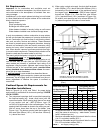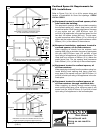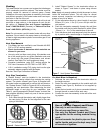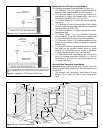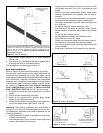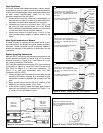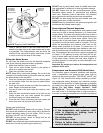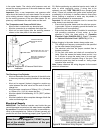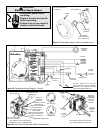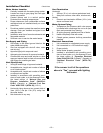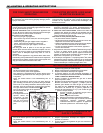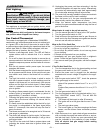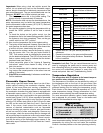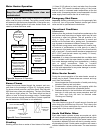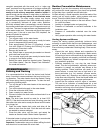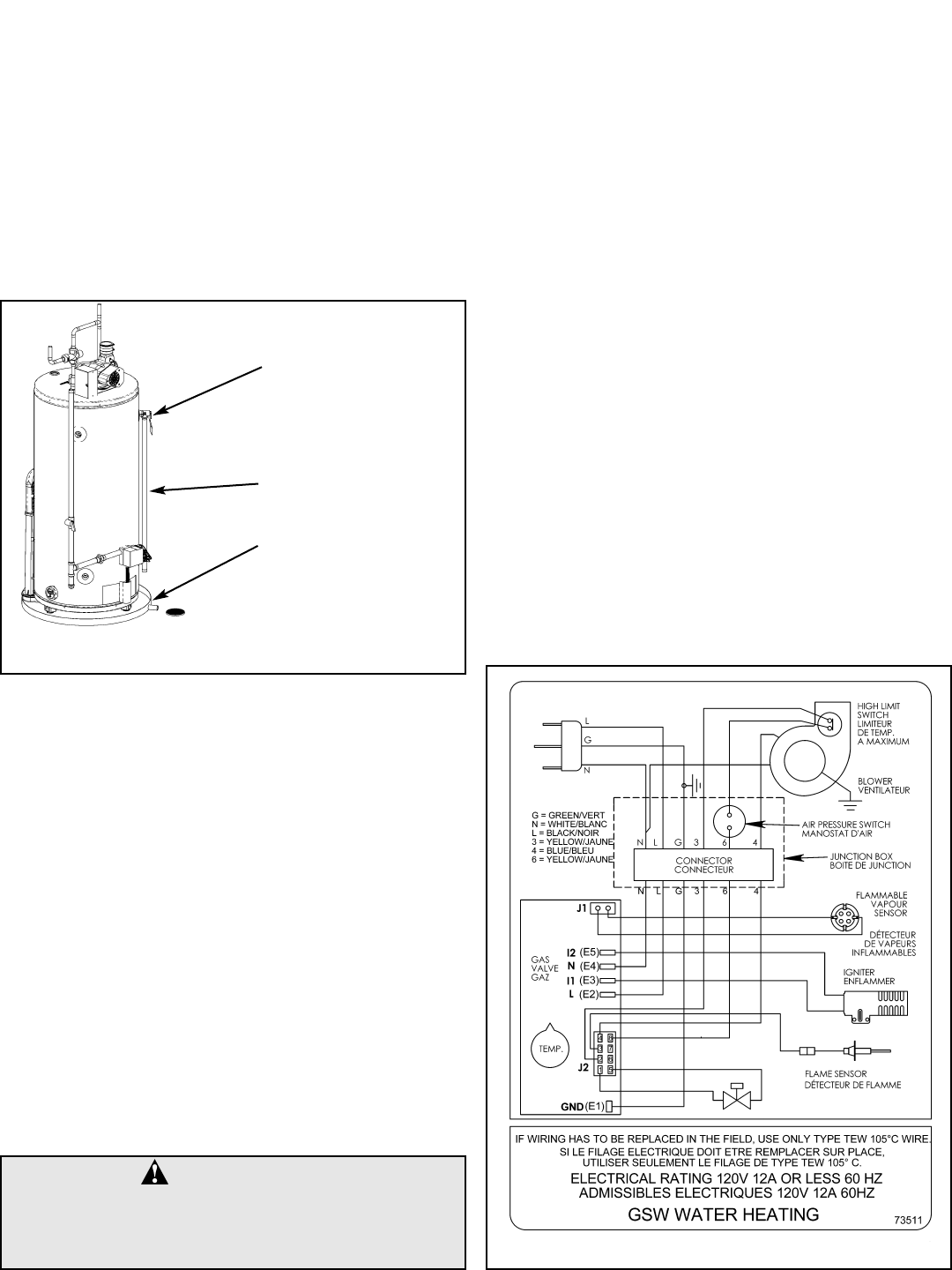
in the water heater. The valve’s relief pressure must not
exceed the working pressure of the water heater as stated
on the data plate.
Important: Only a new temperature and pressure relief
valve should be used with your water heater. Do not use an
old or existing valve as it may be damaged or not adequate
for the working pressure of the new water heater. Do not
place any valve between the relief valve and the tank.
The Temperature and Pressure Relief Valve:
• Must not be in contact with any electrical part.
• Must be connected to an adequate discharge line.
• Must not be rated higher than the working pressure
shown on the data plate of the water heater.
The Discharge Line/Driptube:
• Must not be smaller than the pipe size of the relief valve
or have any reducing coupling installed in the discharge
line.
• Must not be capped, blocked, plugged or contain any
valve between the relief valve and the end of the dis-
charge line.
• Must terminate a maximum of 300mm (12 in.) (Canada)
or 150mm (6 in.) (U.S.A.) above the floor.
• Must be capable of withstanding 121°C (250°F) without
distortion.
• Must be installed to allow complete drainage of both the
valve and discharge line.
Electrical Supply
IMPORTANT: The electrical controls used inside the gas
control/thermostat mounted on this water heater are polar-
ity sensitive. Ensure the electrical supply is connected cor-
rectly in the receptacle box. Failure to connect correctly will
prevent the unit from functioning properly (see Figures 20 &
22). Before performing any electrical service work, label all
wires to avoid connection errors. If wiring has to be
replaced, use only TYPE TEW 105°C wire, (except igniter
wires). If there is a problem with igniter wires, replace ignit-
er assembly in its entirety. In locations where a sump pump
failure, flooding or exposure to water may be present, a
ground fault receptacle is recommended.
Important: Do not use an extension cord to connect the
water heater to an electrical outlet.
• Ensure that the water heater and the outlet are proper-
ly grounded. Failure to properly ground the heater can
prevent the unit from operating.
• Ensure that the water heater is installed in accordance
with prevailing provisions of local codes, or, in the
absence of such, the latest edition of “Canadian
Electrical Code (CAN/CSA C22.1), Part I” (Canada)
or “National Electrical Code” (NFPA 70) (U.S.A.).
Before plugging in the water heater, always make sure:
• The voltage and frequency correspond to that specified
on the water heater wiring diagram.
• The electrical outlet has the proper overload fuse or
breaker protection.
• Fill the tank with water and check all connections for
leaks. Open the nearest hot water faucet and let it run
for 3 minutes to purge the water lines of air and sedi-
ment and to ensure complete filling of the tank. The
electrical power may then be turned on. Verify proper
operation after servicing.
Note: Always reference the wiring diagram for the correct
electrical connections.
Figure 19 Temperature & Pressure Relief Valve
Installation
TEMPERATURE AND
PRESSURE RELIEF
VALVE
DISCHARGE LINE 19mm (3/4 in.)
MIN. DO NOT CAP OR PLUG.
DRAIN PAN. CONNECT TO
PROPERLY OPERATING
FLOOR DRAIN.
WARNING:
When the unit is plugged in, 120VAC is pres-
ent at the electric connections of the gas
control/thermostat.
Figure 20 Robertshaw Wiring Diagram - Junction Box.
– 17 –



